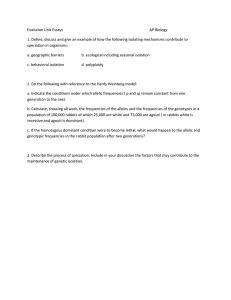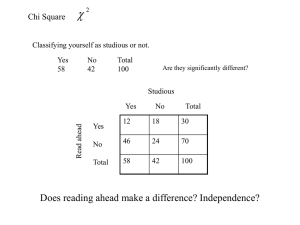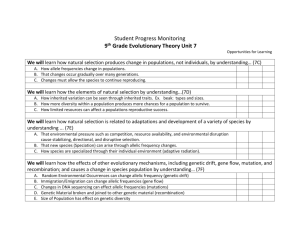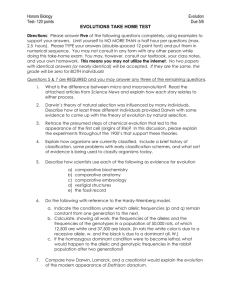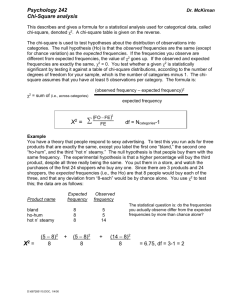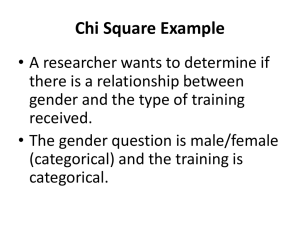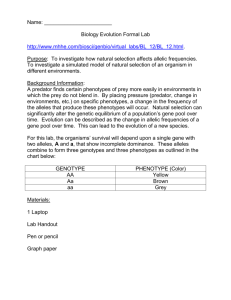AP Biology Practice Problems: Genetics & Evolution
advertisement
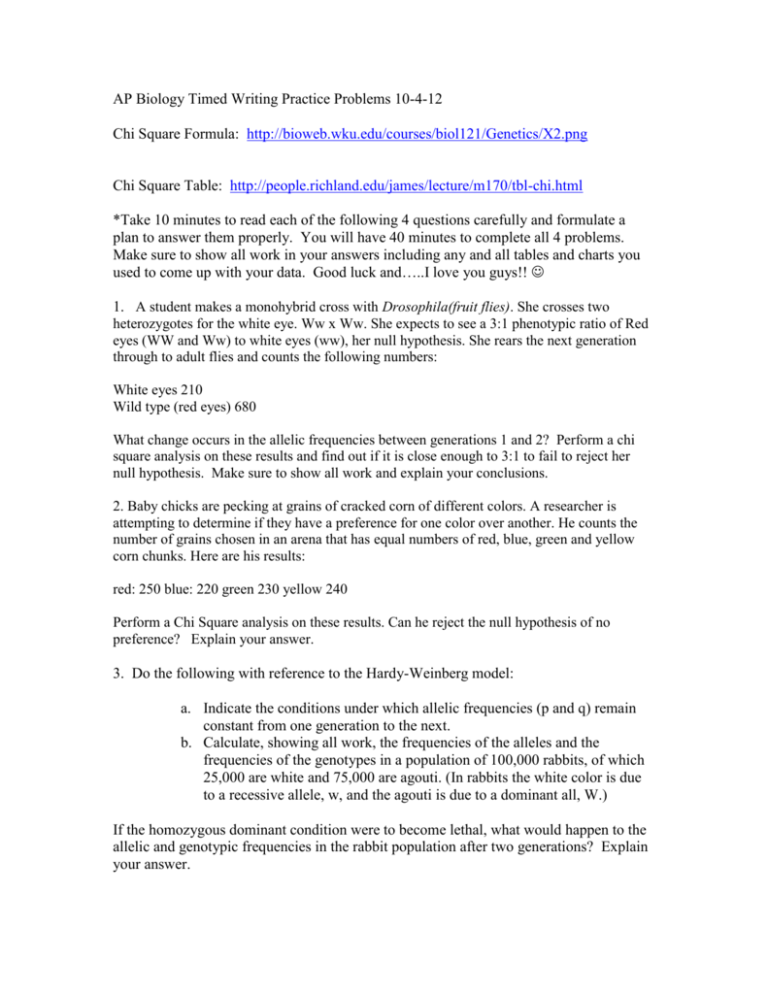
AP Biology Timed Writing Practice Problems 10-4-12 Chi Square Formula: http://bioweb.wku.edu/courses/biol121/Genetics/X2.png Chi Square Table: http://people.richland.edu/james/lecture/m170/tbl-chi.html *Take 10 minutes to read each of the following 4 questions carefully and formulate a plan to answer them properly. You will have 40 minutes to complete all 4 problems. Make sure to show all work in your answers including any and all tables and charts you used to come up with your data. Good luck and…..I love you guys!! 1. A student makes a monohybrid cross with Drosophila(fruit flies). She crosses two heterozygotes for the white eye. Ww x Ww. She expects to see a 3:1 phenotypic ratio of Red eyes (WW and Ww) to white eyes (ww), her null hypothesis. She rears the next generation through to adult flies and counts the following numbers: White eyes 210 Wild type (red eyes) 680 What change occurs in the allelic frequencies between generations 1 and 2? Perform a chi square analysis on these results and find out if it is close enough to 3:1 to fail to reject her null hypothesis. Make sure to show all work and explain your conclusions. 2. Baby chicks are pecking at grains of cracked corn of different colors. A researcher is attempting to determine if they have a preference for one color over another. He counts the number of grains chosen in an arena that has equal numbers of red, blue, green and yellow corn chunks. Here are his results: red: 250 blue: 220 green 230 yellow 240 Perform a Chi Square analysis on these results. Can he reject the null hypothesis of no preference? Explain your answer. 3. Do the following with reference to the Hardy-Weinberg model: a. Indicate the conditions under which allelic frequencies (p and q) remain constant from one generation to the next. b. Calculate, showing all work, the frequencies of the alleles and the frequencies of the genotypes in a population of 100,000 rabbits, of which 25,000 are white and 75,000 are agouti. (In rabbits the white color is due to a recessive allele, w, and the agouti is due to a dominant all, W.) If the homozygous dominant condition were to become lethal, what would happen to the allelic and genotypic frequencies in the rabbit population after two generations? Explain your answer. 4. Evolution is one of the major unifying themes of modern biology. a. Explain the mechanisms that lead to evolutionary change. b. Describe how scientists use each of the following as evidence for evolution. i. Bacterial resistance to antibodies. ii. Comparative Anatomy. iii. The fossil record
